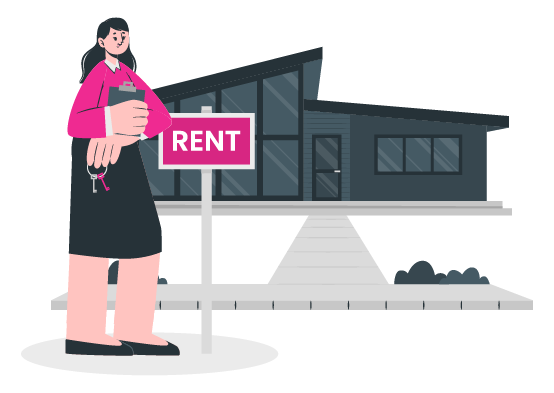How do you know you’re charging the right rent? As a private landlord in Ireland, setting the right rental price can feel like walking a tightrope. Price it too high, and you risk long vacancy periods. Too low, and you miss out on income. In today’s dynamic Irish property market, understanding rental pricing trends isn’t just helpful it’s essential.
Let’s break down what landlords need to know to get rental pricing right in 2025, from market trends to tenant expectations and legal considerations.
Ireland’s Rental Market in 2025: What’s Changing?
The rental landscape in Ireland has changed significantly over the past few years. Post-pandemic demand, slow new housing supply, and changes in rental regulations have all contributed to rising rents across the country.
Urban areas like Dublin, Cork, and Galway continue to lead with the highest rental prices, but rural and commuter towns are catching up. With more remote workers relocating outside of city centres, areas like Meath, Louth, and parts of the Midlands are seeing a surprising boost in rental value.
What does this mean for landlords? It’s no longer enough to copy last year’s rent or mimic your neighbour’s rate. You need real data.
What Influences Rental Prices in Ireland?
There are several factors that determine how much you should charge for your rental:
1. Location, Location, Location
Proximity to schools, transport, jobs, and amenities all affect what tenants are willing to pay. Properties close to Luas lines, bus corridors, and city centres still command a premium.
2. Property Type and Size
A one-bed apartment in central Dublin could cost more than a three-bed house in a rural town. Consider square footage, number of bathrooms, garden space, and parking.
3. Condition and Furnishings
Modernised, well-furnished homes attract higher rents and better tenants. Energy-efficient features like heat pumps or good insulation are also in demand.
4. Rental History and Market Timing
If you’ve had long-term tenants paying below market rates, it’s worth reassessing. Also, demand tends to spike in the summer and early autumn ideal times to set slightly higher prices.
5. Legal Restrictions (RTB and RPZs)
Don’t forget that many areas are designated Rent Pressure Zones (RPZs), which limit how much you can increase rent each year. Always check with the Residential Tenancies Board (RTB) before adjusting rent.
Tools and Strategies to Set the Right Rent
Use Data from FindQo.ie
As Ireland’s modern real estate platform, FindQo.ie allows landlords to see current listings, pricing comparisons, and neighbourhood trends. This kind of insight can save you from under- or overpricing.
Check the RTB Rent Calculator
If your property falls within an RPZ, use the RTB’s online calculator to determine the legal increase you’re allowed.
Know Your Ideal Tenant
Consider who you’re targeting: students, professionals, young families? Each group has a price sensitivity and set of expectations. Matching your pricing and offering to the right tenant type increases occupancy and satisfaction.
Factor in Additional Costs
Are you including utilities, internet, bins, or parking? If so, adjust your rent accordingly. Make sure you’re still covering mortgage repayments, maintenance, and insurance while staying competitive.
Should You Ever Drop Your Rent?
It may sound counterintuitive, but yes sometimes it’s better to lower rent. If your property has been sitting vacant for weeks, or you’re seeing low interest on listings despite good photos and descriptions, the price might be too high.
The key is flexibility. An occupied property at a slightly lower rent still generates income, while an empty one drains resources. Plus, a competitively priced property attracts more tenant applications, giving you the luxury of choosing the best fit.
How to Stay Competitive in a Changing Market
Stay Informed
The Irish rental market is moving quickly. Subscribe to local real estate newsletters, follow FindQo.ie updates, and join landlord forums to stay ahead of trends.
Review Your Rent Annually
Even if your property is in an RPZ, you can increase rent in line with inflation every 12 months provided you follow the proper procedures.
Offer Long-Term Value
Tenants are willing to pay more for properties that feel like home. A small investment in new appliances, fresh paint, or outdoor space can justify a higher price point.
Embrace Online Platforms
Most tenants now search online. Your rental ad should include professional photos, a clear description, and highlight unique features like pet-friendly policies or fibre broadband.
Ready to Price Your Property Confidently?
Navigating rental pricing as a private landlord in Ireland doesn’t have to be overwhelming. With the right tools, a good understanding of current rental pricing trends, and a finger on the pulse of what tenants want, you can price your property competitively and maximise your returns.
Whether you’re managing a single apartment in Dublin or a growing portfolio across the country, smart pricing is your best strategy.

